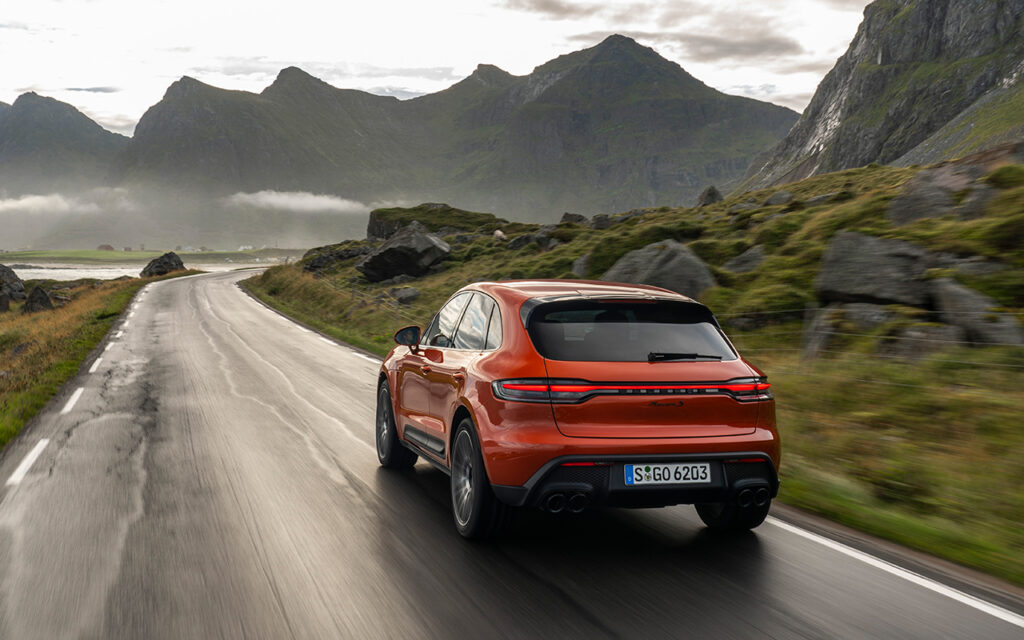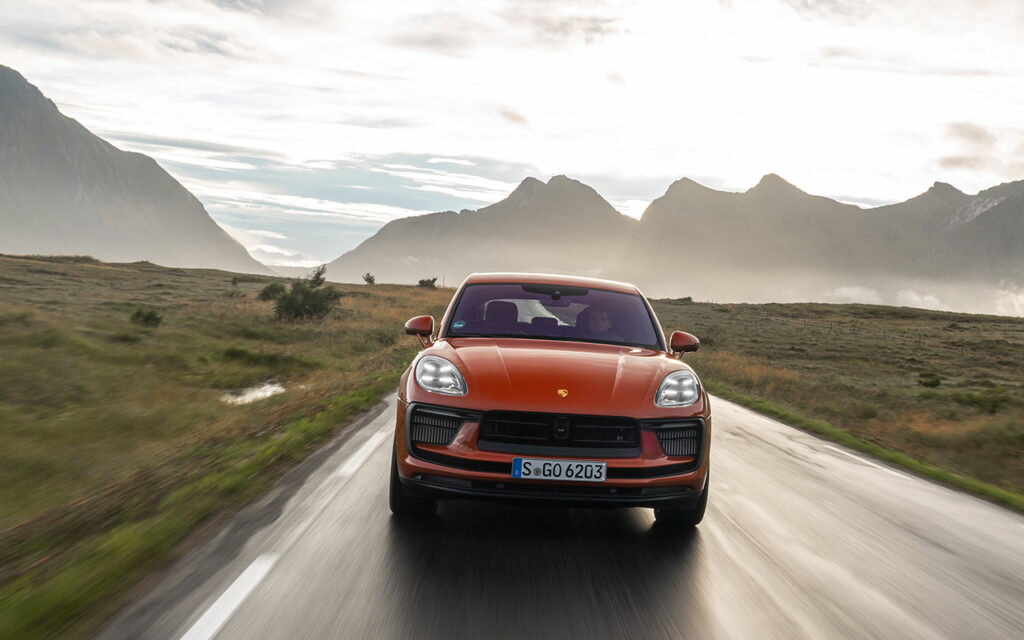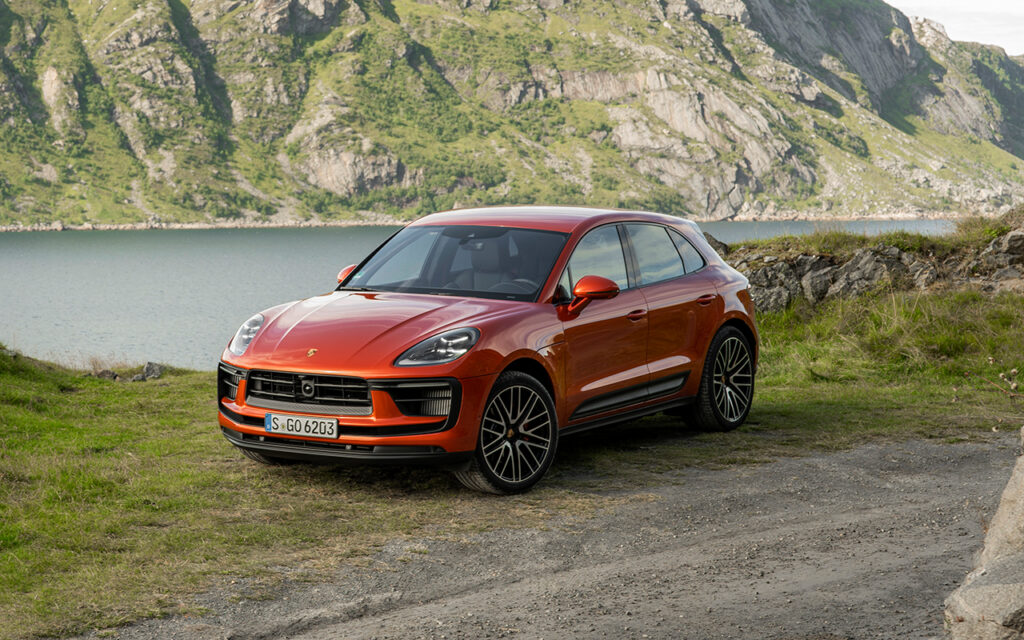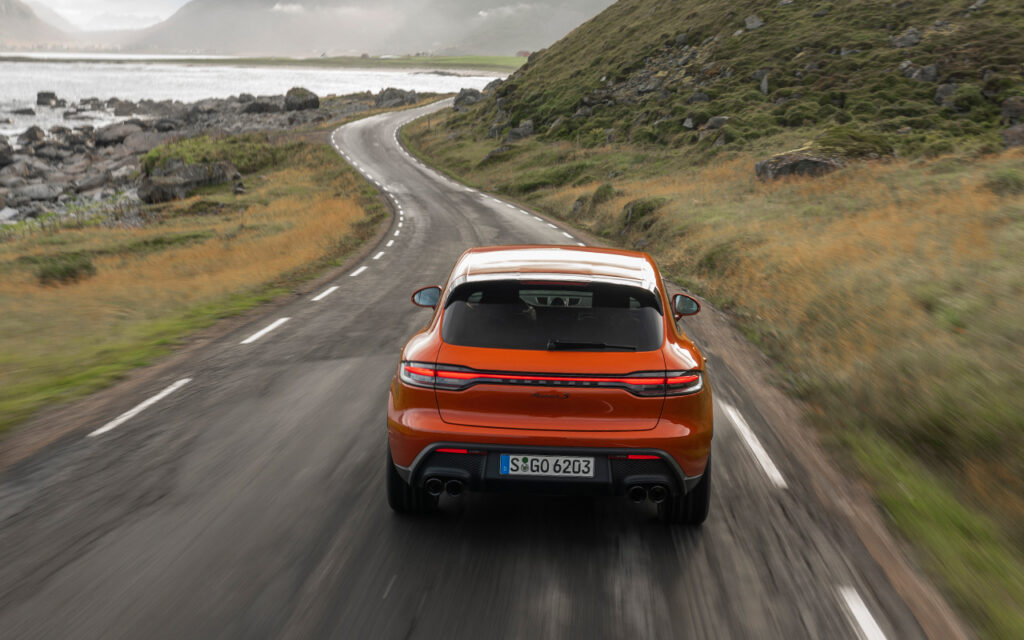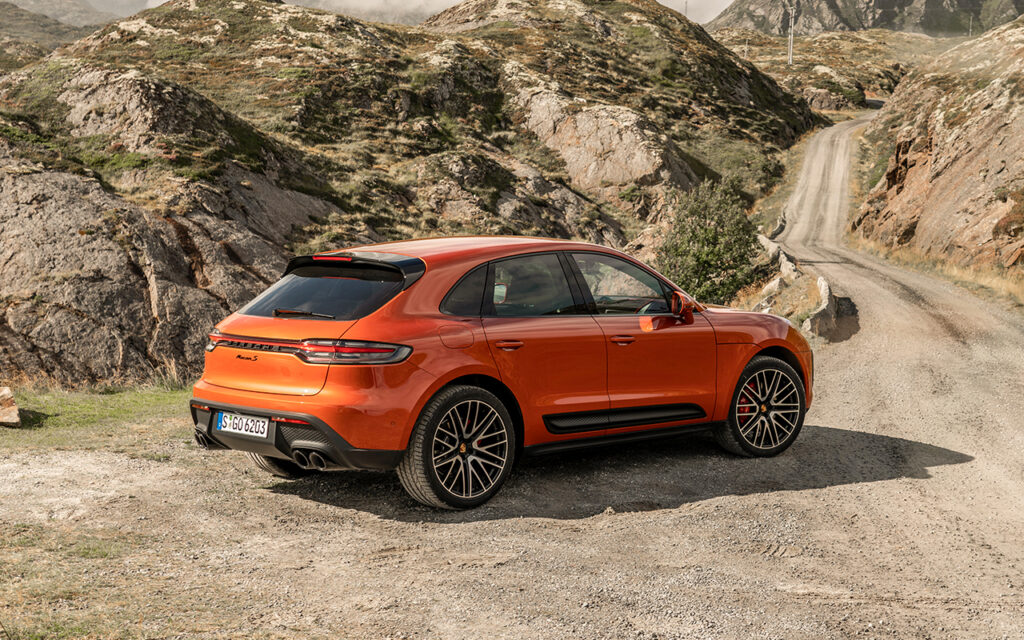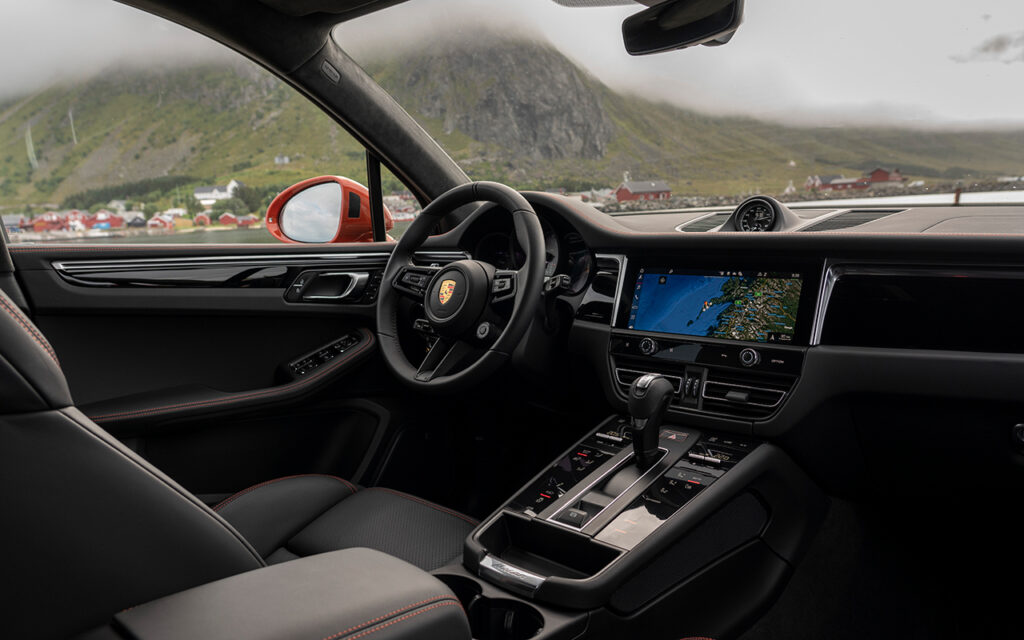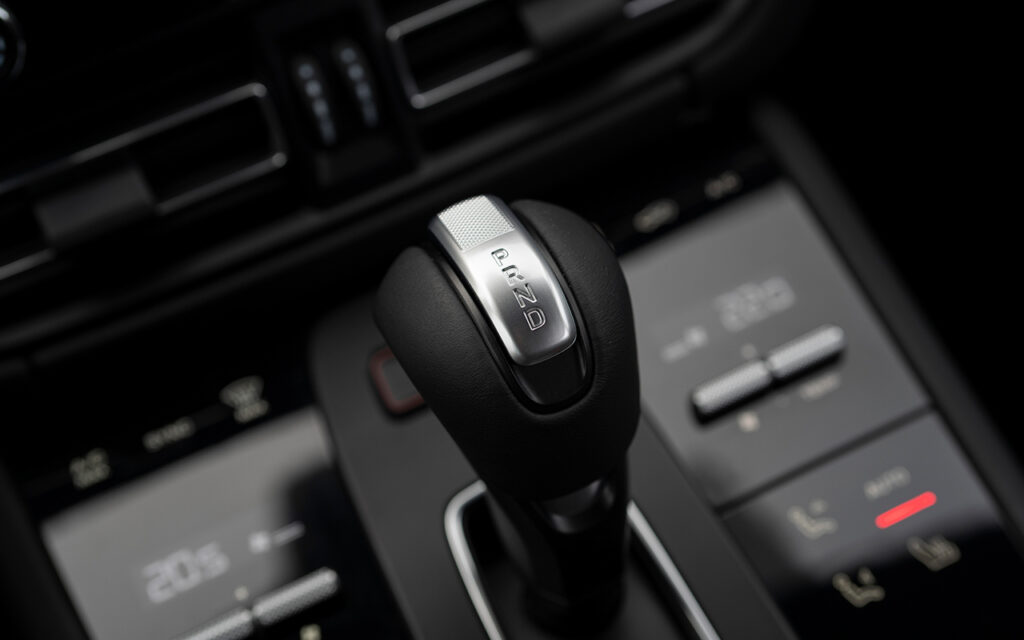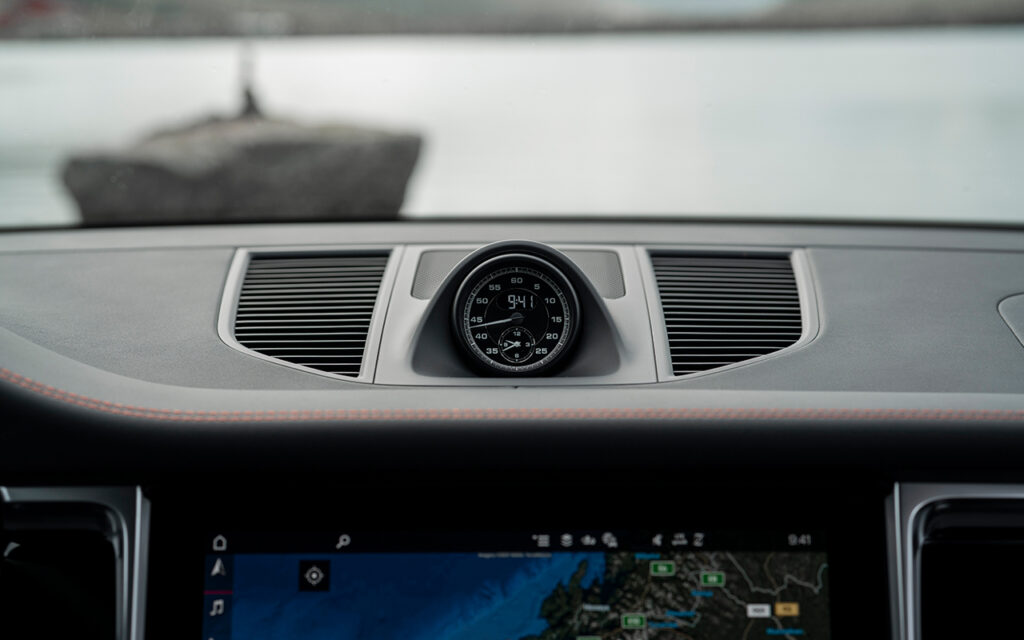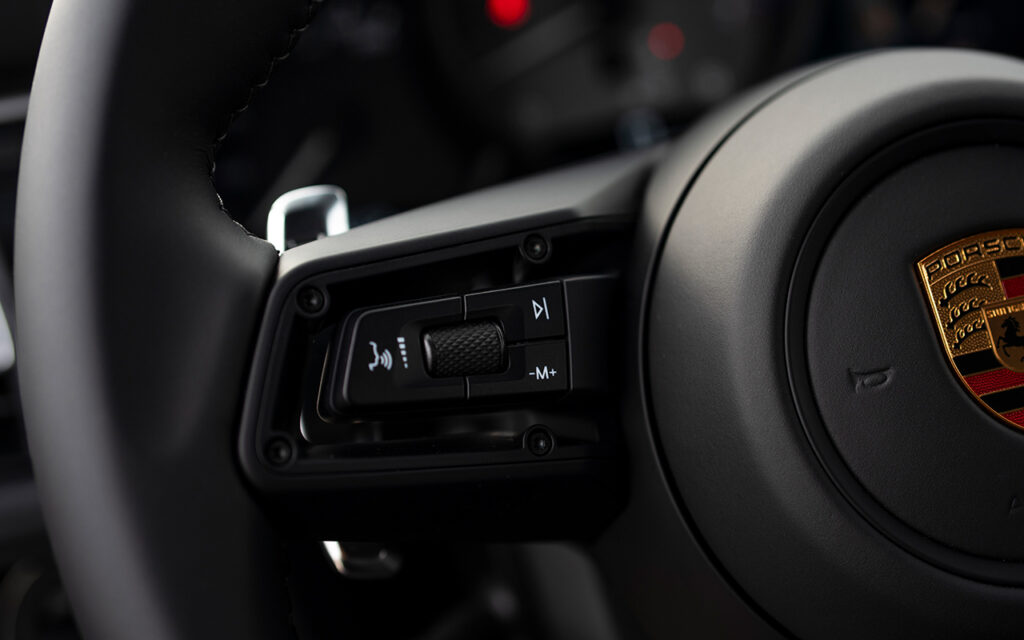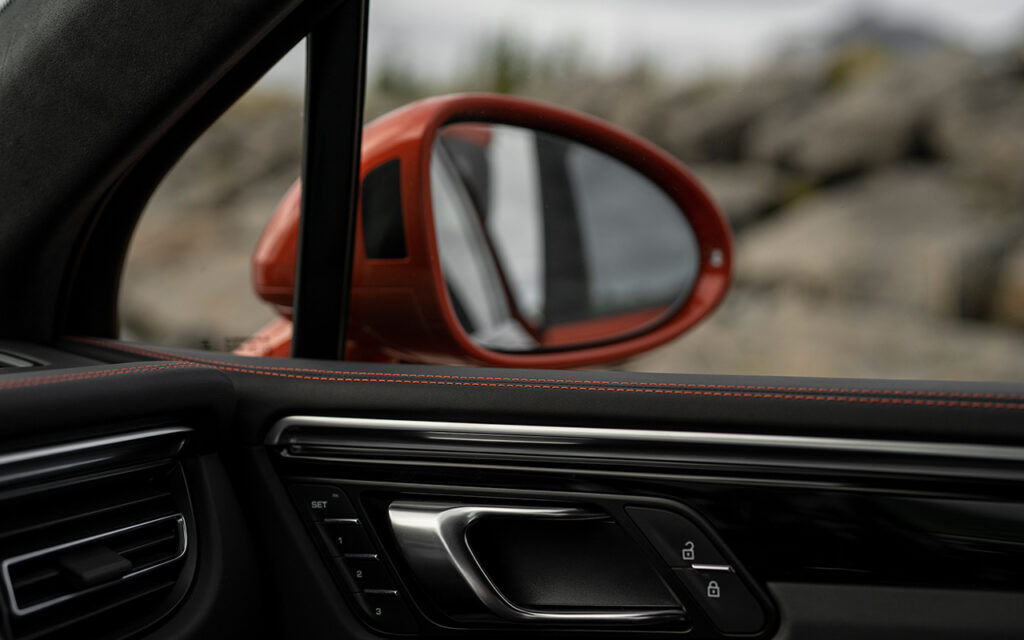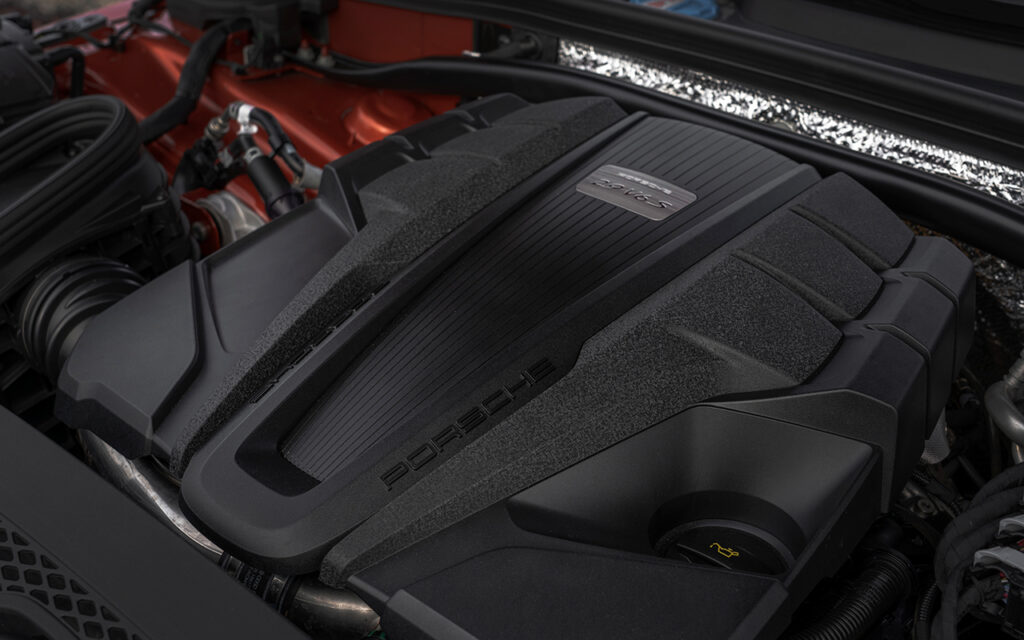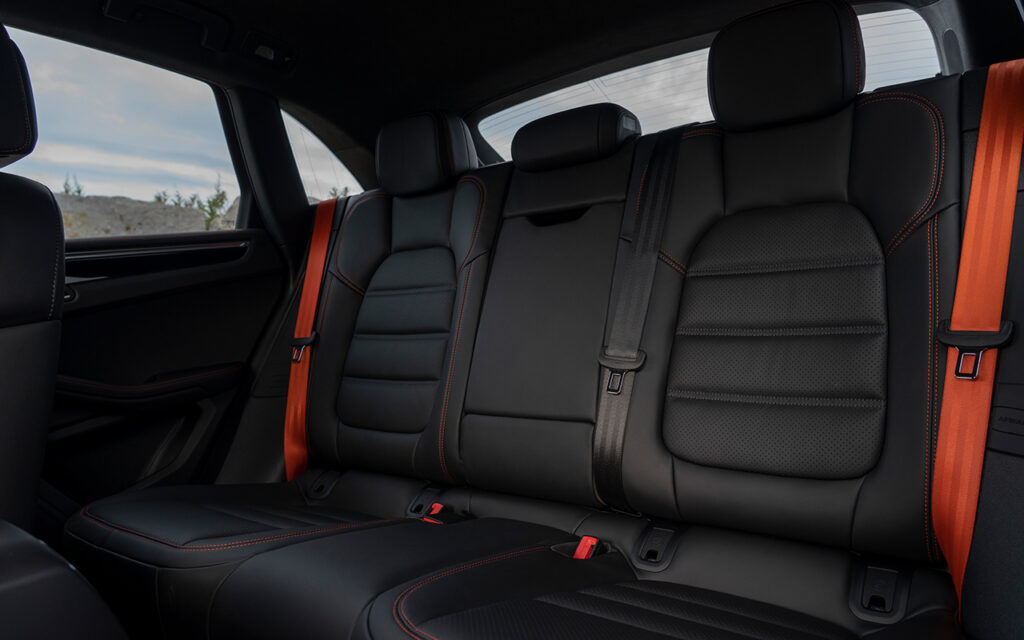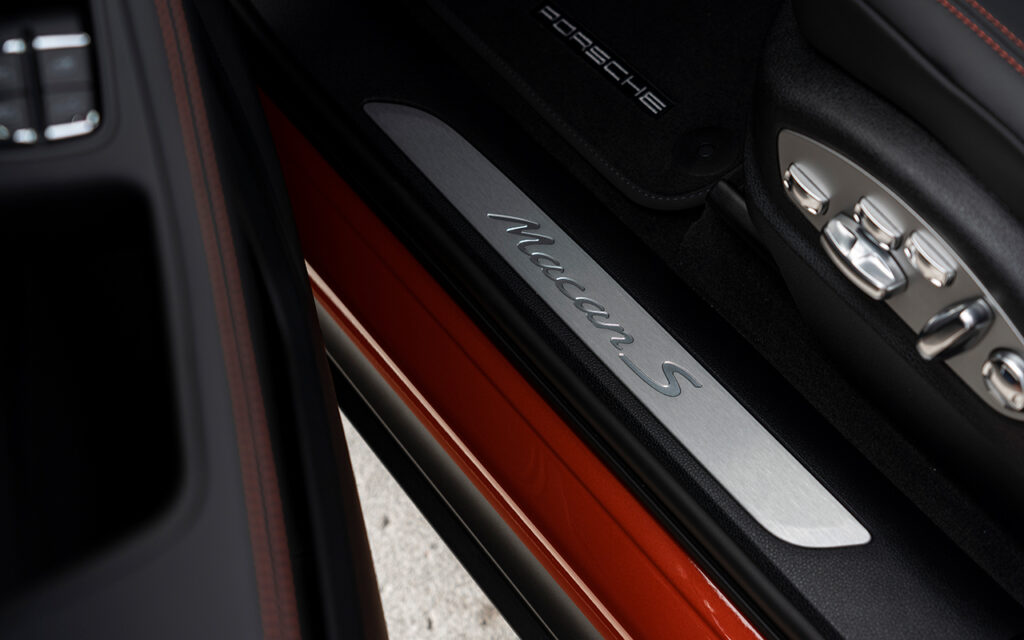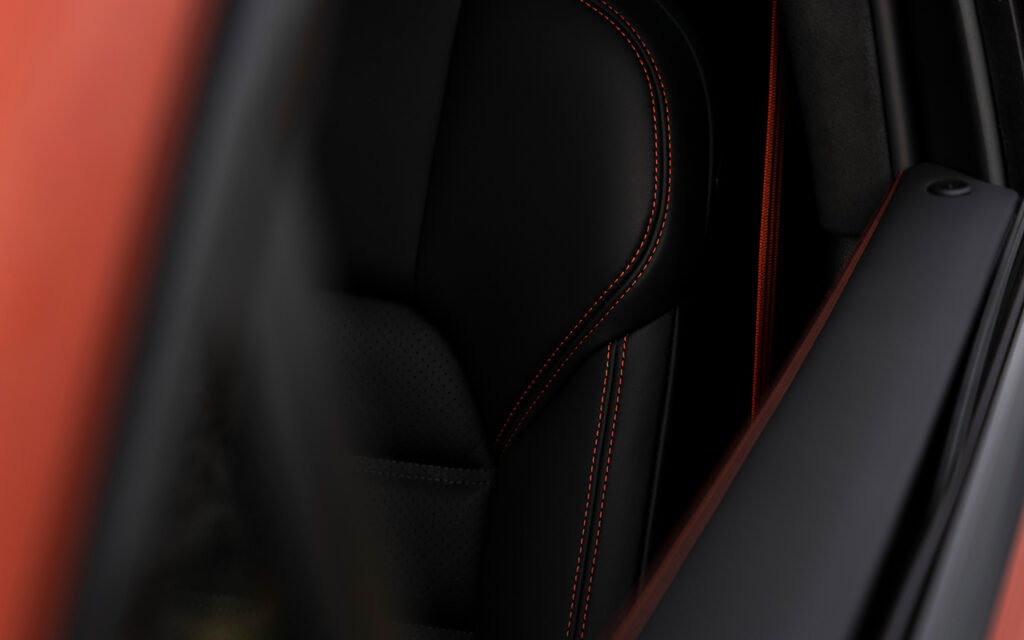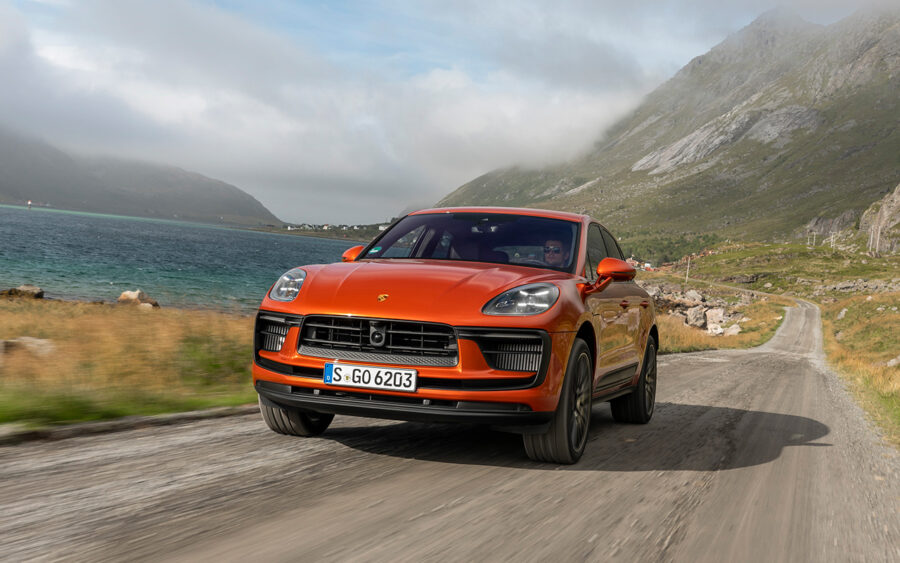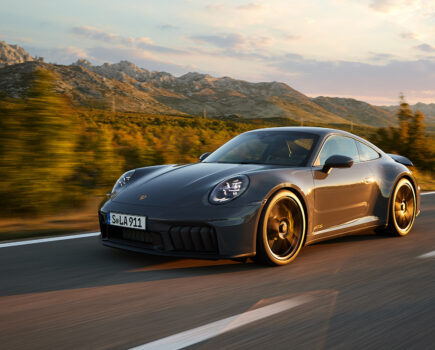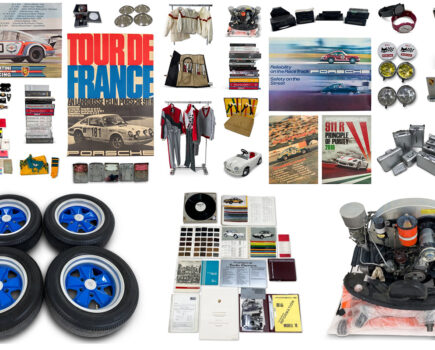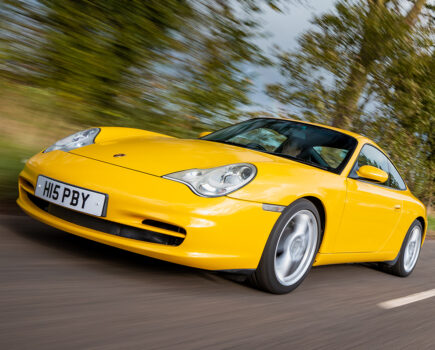The Porsche Macan S combines sports car DNA with SUV practicality. Do you need to spend extra on the hotter GTS?
Words: James Fossdyke
It’s all too easy to feel conflicted about the Macan. For some time, this compact sports utility vehicle has been one of the main breadwinners for Porsche, a company now building more SUVs than sports cars. Many of you will consider those words gut-wrenching. At the same time, it’s impossible not to acknowledge the Macan’s brilliance. Ever since the model arrived back in 2014, it has been the best medium-sized luxury SUV money can buy. It has also been the most exciting to drive. Put simply, no other compact SUV has mixed the Macan’s practicality and quality with such impeccable dynamic ability.
The Macan is, however, getting long in the tooth. Moreover, its rivals are becoming ever more talented. For example, Jaguar has made enormous progress with the latest-generation F-Pace, while the BMW X3 has stepped out of the X5’s shadow to become a terrific all-rounder. With such accomplished opposition effectively trying to play Porsche at its own game, the engineers in Zuffenhausen are having to make constant updates in a bid to keep their golden child at the head of the pack. Enter the Macan’s second facelift, a development which could be construed as either tragic desperation or, as we like to think, the latest phase in a never-ending quest to improve.
The new Macan S gives the unmistakable impression it’s a bit of both. As you wander around the vehicle, you can see little has changed, save for a new front bumper and the new range of alloy wheels, which start at nineteen inches in diameter for the base model Macan and grow to twenty inches in the Macan S. Eagle-eyed readers might also spot the more rounded diffuser at the rear and the standard-fit Sport Design door mirrors. LED headlights with Porsche’s Dynamic Light System (PDLS) are now standard across the range.
These changes add up to very little, with the new Macan appearing incredibly similar to its predecessor. Not that this is a problem. After all, the Macan has always been a good-looking Porsche, but it’s difficult to ignore the fact this is pretty much the lightest facelift Porsche could have enacted on its biggest-selling product. The interior is equally short on surprises, with the new Macan marked out only by its 911-derived steering wheel and haptic controls on the centre console. In fairness, those small changes have brought the Macan cabin up to date, but they’re minor differences — nobody will be desperate to trade in their 2019 model for such small improvement.
Sadly, the almost imperceptible differences make this latest facelift look a little half-baked. If Porsche went to all the trouble of changing the wheel and the centre console, surely the company could also have changed the instrument cluster? Instead of the shiny new semi-digital display you get in the latest 911 (and even the Cayenne), the Macan stumbles along with the same instrumentation it has made use of for years. There’s nothing wrong it per se — everything works quite well — but the graphics look a bit old-school, and it isn’t as impressive as what we find in Porsche’s latest models. It’s not enough to bother anyone coming from a Range Rover Velar or even an X3, but for those familiar with Porsche’s freshest metal, it’ll come as something of a disappointment.
These gripes aside, it’s hard to knock the Macan S’s interior too much. As with every other model in the range, the quality is staggering. Everything is built with meticulous precision, and everything you touch feels solid, robust and, in typical Porsche fashion, somewhat over-engineered. The removal of the buttons on the centre console has only magnified the effect, not because what’s left is especially brilliant or clever — it isn’t — but because what came before always felt too thin and too plasticky in a car costing well over £50,000. And that figure is before you start mucking about with the options list.
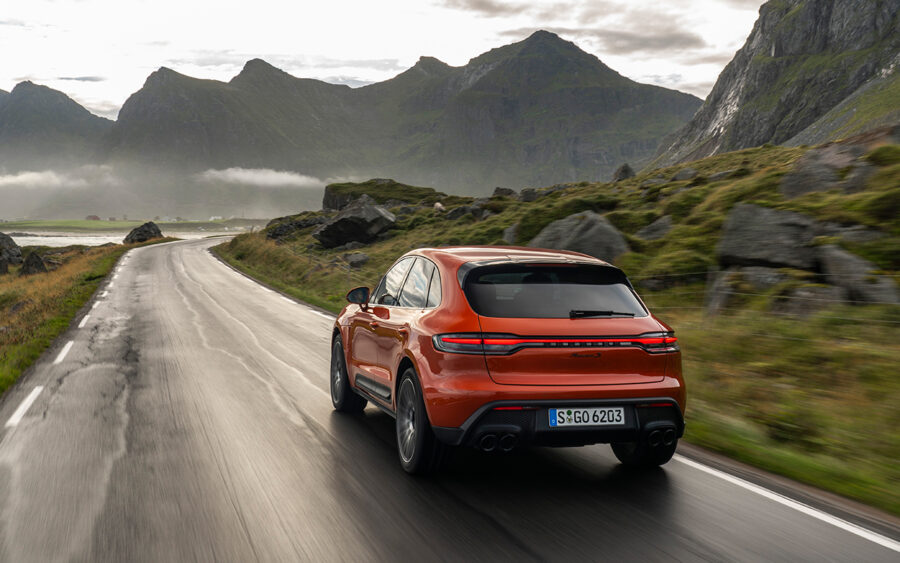
Our test car has a list price just a couple of pints shy of £70,000. Almost £17,000 of this sum was made up by extras. Alongside the standard parking sensors, three-zone climate control and Porsche Communication Management (PCM) infotainment system with Apple CarPlay, this Macan S came with goodies including black leather (£3,687), the Sport Chrono Package (£704) and adaptive air suspension with Porsche’s
Active Suspension Management (PASM) system (£1,044). Of course, Porsche has always been into ‘individual equipment’, but there are still many features which ought to be standard across the range, particularly on the Macan S. Full leather upholstery, for example. And automatically dimming mirrors. For such a premium vehicle, offering them as options smacks of profiteering. Then again, Porsche invests its money in large-scale research and development, producing vehicles as well engineered as this one. We have to concede it’s a case of swings and roundabouts.
Underneath the lightly revamped veneer, the Macan S’s oily bits have changed slightly more, even if they’ve retained a distinctly familiar flavour. Up front, you still get a twin-turbocharged V6 petrol engine, but it has shrunk in the wash, dropping from three litres to 2.9. Even so, a power upgrade has seen the old Macan S’s 349bhp eclipsed by the newcomer’s meatier 376bhp.
Every version of the Macan gets a seven-speed PDK semi-automatic gearbox and the Porsche Traction Management (PTM) all-wheel-drive system, which uses an electronically controlled multi-plate clutch to distribute power between the axles. But, as is so often the case, performance figures will depend on whether you shell out for Sport Chrono. At £704, it seems an obvious box to tick, but less keen drivers might choose to spend their money elsewhere on the bountiful options list.
If you stick with a completely standard Macan S, its V6 will propel you from nought to 62mph in 4.8 seconds, which is three tenths slower than the standard GTS manages, but 1.5 seconds faster than the entry-level Macan. As mentioned earlier, our fully loaded test car came with Sport Chrono, as well as Power Steering Plus, Porsche Torque Vectoring Plus and the aforementioned air suspension, meaning it can devour the same benchmark sprint in just 4.6 seconds, though it tops out at the same 161mph as the standard S. Even with Sport Chrono, the 435bhp GTS can only just beat those figures, hitting 62mph three tenths earlier and racing on to 169mph. Small margins for a car costing almost £11,500 more.
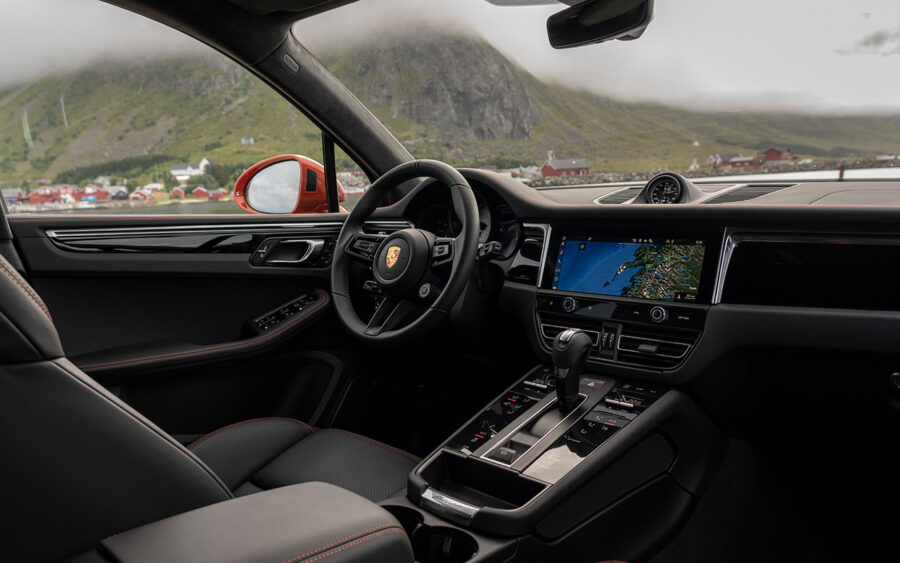
This is all ‘on paper’ stuff, right? Obviously, the GTS should feel better on the road. Except it doesn’t. Even in the Macan S, the 2.9-litre V6 sounds deliciously angry, making a kind of ripping noise you might expect from some mythical volcano. And when you put your foot down, both Porsches will simply hang on a fraction of a second while the gearbox does its business, then catapult you toward the next corner at a similarly alarming rate of knots. This isn’t a problem — bends bring out the best of the Macan S. As is so often the way these days, the steering feels slightly over-assisted and a little short on feel, but the fast steering rack makes this Porsche seem immediate and alert, allowing for rapid changes of direction.
Despite the height of the Macan’s raised SUV body, which sits almost twenty centimetres above the ground when set to its normal ride height, the weight is so well controlled you could be driving a hot hatch. There’s no hiding the lean through corners, even with the air suspension, and you will have to manage that weight transfer if you really want to maximise the Macan S’s potential, but it isn’t anything like as wallowy as its rivals, even the well-sorted ones. Instead, the new Macan S feels as level and as flat as you might expect from the best-handling sports cars, meaning you can corner at the sort of speed which just shouldn’t be possible. Tackling a decent B-road at 60mph feels like wafting around a racetrack at walking pace, such is this Porsche’s capability. It might be stable, but it still feels agile and ready for action. Think of it like a goalkeeper facing a penalty kick, ready and waiting to pounce in either direction when the ball is finally struck.
Unless you’re pushing the bounds of legality or common sense, you’ll really struggle to explore the Macan S’s limits on the public road. The trick adaptive suspension ensures the fat tyres stay in contact with the asphalt as much as possible — even damp, slightly greasy surfaces will seldom trouble the incredible levels of grip. And the all-wheel-drive system is so clever and so well-judged that the Macan has all the kind of balance you’d expect from a rear-drive executive saloon. Even on the optional twenty-one-inch alloys, the S feels relatively supple, although the bumps make their presence felt. To clarify this statement, the Macan S doesn’t so much jolt over the potholes as give you a poke. Instead of breaking your back, it’s as though your Porsche is trying to let you know you’re still driving on a British back road, but the council responsible for maintenance doesn’t have the budget it might like.
On the road, therefore, the Macan S feels like a very close rival to the GTS. The differences are almost imperceptible, and although our test car felt marginally firmer than the GTS we tried back-to-back, the two cars were otherwise almost identical. Of course, small changes can (and often do) add up, particularly when you approach the limit, but in everyday situations and moderately sporty driving, the S and GTS feel more or less identical. On a track, you might spot a small difference, but the only track a Macan of any description is likely to meet will be the entrance leading to a local farm shop.
We aren’t suggesting the new Macan will be a hit with all-terrain enthusiasts, but there’s comfort in knowing even the S can hack a little bit of light off-roading. To this end, with the air suspension comes a ‘rough road’ mode raising the ride height, increasing ground clearance to provide a tad more space between the expensive underpinnings and any rocks or boulders lying in wait. This isn’t a Land Rover — far from it — but wet fields, muddy puddles and the odd snowy ski resort won’t cause the Macan S a moment’s trouble. This will be more than enough for most Porsche showroom visitors.

So far, then, the Macan S has come up smelling of roses. The updates might be minor, but they’re sympathetic and the model was hardly feeling desperately outmoded anyway. The S is also considerably cheaper than the GTS, which is only marginally faster and no better to drive, at least not in the real world. The Macan S still isn’t free of worries, though. In many ways, and in the absence of any top-end Turbo models, the mid-range Macan has more to fear from its little sibling, the basic two-litre Macan, than it does from the GTS.
With the smaller engine on board, the standard car feels lighter, and there’s something more natural about the way the steering wheel flows from lock to lock. That said, the two-litre car doesn’t have the poise of the S. There’s no sense it’s on its toes and ready for action. Nor does it have the fabulous noise or the straight-line speed. It’s still a great Macan, but not as good as the S.
On balance, therefore, the Macan S is the pick of the bunch. This conclusion may change if and when more hardcore models are introduced, but for the time being, there’s no arguing with the mid-range model. It has all the soul of the GTS and most of the capability but is considerably cheaper to buy. And while it isn’t quite the ultimate Macan, it’s the one attracting the smartest money.


